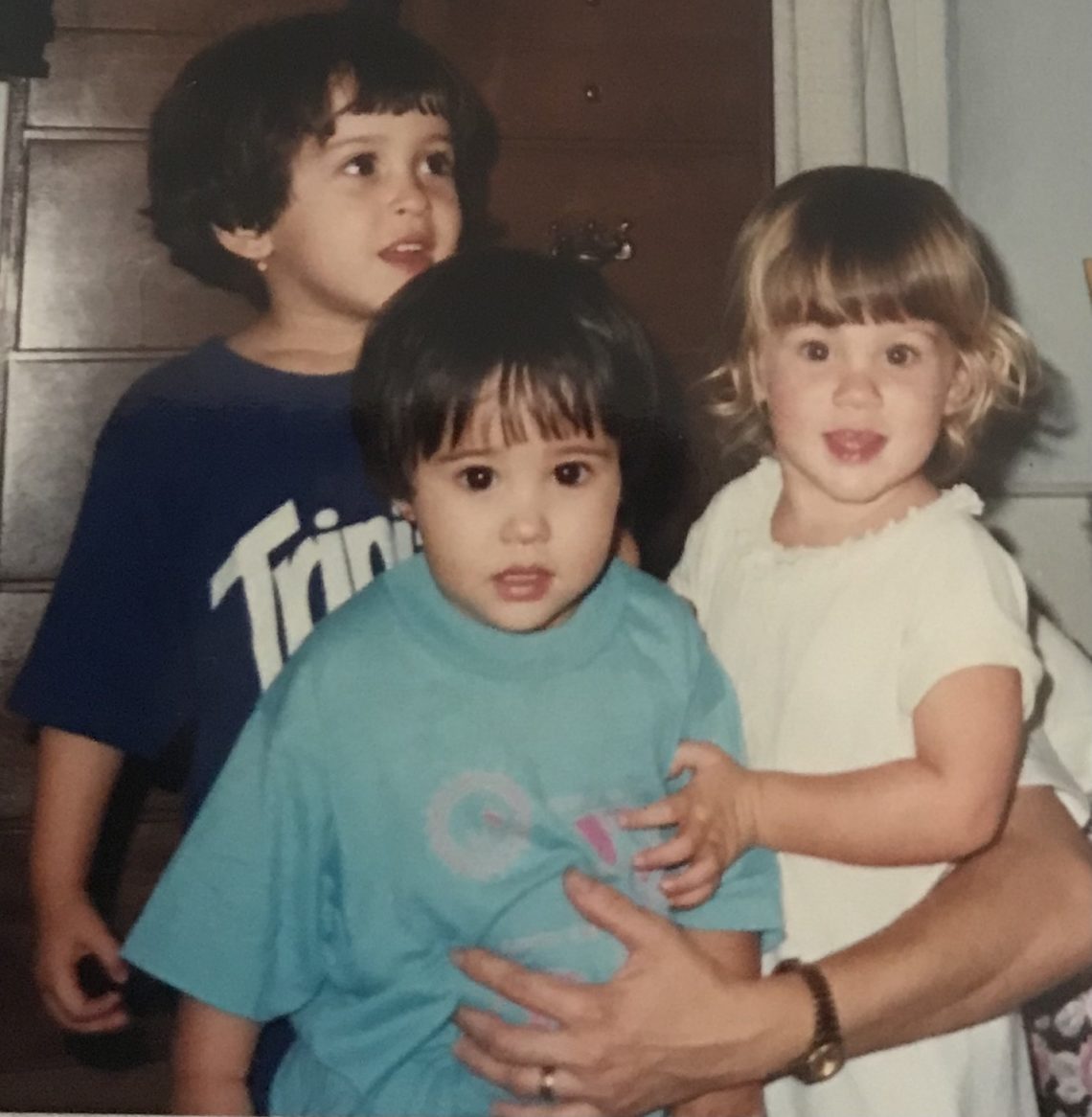I laughed as I read the text from my cousin, Becky, letting me know she would be late, as I prepared for our interview on Lullabies. She explained her son had, “ …been fussy, but he’s going down now, so should be soon.” As I imagined Becky with her four month old, his little double chin, and squishy arm and leg rolls, it was hard to imagine him being fussy. I wondered if his chubby cheeks had turned bright red, and if he was “going down” to the sound of his mother’s voice. The irony of Becky running late to be interviewed on Lullabies because she was busy singing them amused me.
After a successful lullaby, I imagine, a tired but happy looking pair of big brown eyes greeted me across the screen with a wide, bright, smile. Only two months apart in age, and with me only having brothers, Becky feels like a sister. In some ways we could not be more polar opposites, but there is this pull between us which keeps us close. Meeting Becky, in her new role as mom, I was curious to hear her stories. I wanted to learn her perspective on what lullabies are, and what role they now play in her life.
There seems to be two layers when Becky speaks about lullabies. On the surface, a lullaby seems to be a tool, in song form, which she uses to soothe her fussy baby down to sleep. When we crack the, seemingly simple, outer shell of what it seems lullabies are to my cousin, we may find they play a richer role in her life. Lullabies seem to have caused Becky to form new connections not only to her infant, but with music, her family, and herself.
Like a hammer, Becky uses lullabies to help build a place for her baby to drift off to. For Becky, a lullaby is a tool, she explains, “You only need a few tools to be successful in the department of getting them to go to sleep. And that’s, I think, specifically where lullabies come in to play is, like, to get them to go to sleep.” To Becky, lullabies seem to have a purpose, they are intended to get someone to go to sleep. She answers who those someones are, when she explains, “And, to me, lullabies are more, like, for kids, or for babies.” Upon learning her ideas on how lullabies work in getting babies to sleep, I started to see that lullabies seem to be building for Becky more than just a sleeping baby in her home.
The connection which lullabies seem to have built between Becky and her son is integral. It seems to be the foundation supporting a remodel of the connections she has with herself, and her family. In Becky’s response to asking if there is anything she is trying to communicate with her baby while using lullabies, it seems we get a sense of just how specialized of a tool lullabies are in building that foundation. Becky explains, “Comfort is the number one goal.” Answering that she is communicating, “a sense of reassurance, that everything will be ok.” She continues,
“He’ll know and recognize my voice by me talking to him, but then when he hears me singing to him it’s, kind of a little bit, more light, in the sense of how the delivery is. Cause I’m happy doing it, and he can feel that sense of ‘ok, mommy’s here, and mommy’s happy, so everything is good.’”
So, to Becky, lullabies seem not only to be a tool she uses in helping get her child to sleep but also a way she communicates her presence, and mood to her baby. Through hearing them, it seems, she hopes her baby feels a sense of reassurance allowing him to comfortably drift off to her voice. Hearing Becky express she was happy singing to her son, I commented saying it seems she as well gets something from lullabies. She nodded, “I definitely get something from it. It’s like a bonding experience.” At the time, I was only considering the experience as a bonding connection between mother and baby.
It seemed lullabies had not only helped Becky in connecting with her baby, but learning how to use lullabies seemed to create new connections between her and her own mother. Lullabies, to Becky, are tools and there seems to be techniques in using them. Describing a particular one she calls “shushing him,” Becky explains it is a technique she learned watching her mom calm her baby. Then, I heard what sounded like a rattle coming out of her mouth. Becky bared her teeth, almost like a grin but with her lips curled away from her face, rhythmically pushing air out making a crisp “shh,” sound with each exhale. By witnessing what she calls her mother’s, “version of, you know, getting him to calm down, and go to sleep,” it seemed Becky was amazed with how well it worked. She explained that after seeing her mother “shushing” her baby, she thought, “I’m going to get tired of shushing.” Laughing, she claims, on Youtube, “they have like eight hours of somebody shushing. I’ve used that, it’s golden!” It seems even without his mother nor his grandmother as the “shushers” this technique proves successful in not only calming him to sleep, but also expanding the connection his mother has with her own.
With her older sister as guide, the interactions it seemed Becky has had with her niece and nephew has shaped her techniques in using the tools required to fulfil her new job. Becky describes how when her niece and nephew are tired they will ask for, “La la la?” I learned what that meant when Becky started singing. It seems, “La la la” is a lullaby. The words are simply “La la la,” sung to the tune of “Go to Sleep Little Baby.” I found this interesting, and Becky seemed amused by their cute requests, as she grinned trying her best to impersonate them asking for their lullaby. Maybe lullabies are quite simple, it seems Becky’s niece and nephew have associated them with sleep, so much so that instead of saying they want to go to bed they ask for the same simple lullaby every night. Or maybe they sense the connection lullabies seem to construct, and in asking for “La la la,” they are asking for what Becky describes she gets from singing them, a bonding experience.
Reminiscing on the first month with her newborn, Becky describes a moment she believes she will never forget. She played soft music for the baby, and the song “Every Breath You Take” came on; she says she will always remember how it felt to connect to those lyrics in a new way. It seems through this song, lullabies have changed Becky’s connection with herself. Describing the lyrics she explains, “And that’s how I felt, like, I wanted to watch every moment of this kid’s breath, and every move. And everything was, such, like, a miracle was happening every second.” Becky clarified becoming a parent, “you relate to the songs in different ways now, having that type of connection.” Through lullabies, Becky’s relationship with music has changed. She explains there is, “a totally different emotional connection, now, being, like, you know, that he came from me. Which is weird to say, but, yeah having my own little peanut.” This different emotional connection Becky felt seems to be a consistent theme, washing over all aspects of her life as she navigates motherhood and masters the technique of using lullabies.
Through lullabies, as she bonds with her baby, Becky’s connections with music, and loved ones have changed. Therefore, the relationship she has with herself must have also changed, because now she is not only Becky, but also Mom. Through discussing lullabies, I feel the pull between Becky and I is stronger. I am with her on her journey, and I hope to someday look up to her as a guide if I have children. Lullabies, to Becky, are tools meant to get children to fall asleep. Through sharing the techniques of using them, Becky has not only built a relationship with her son, but strengthened and changed the connections she has with music, her family, and herself.

